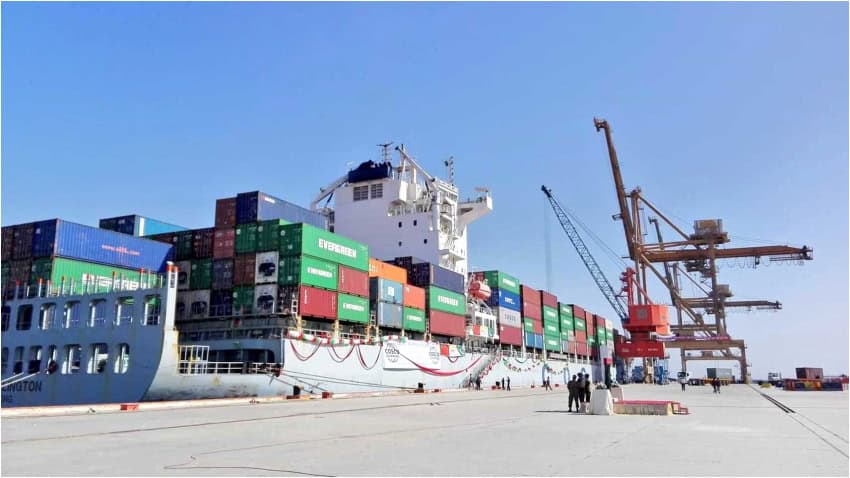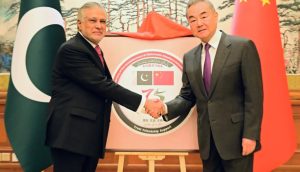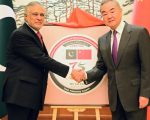WASHINGTON – Pakistan’s economic uplift under the chair of Prime Minister Nawaz Sharif seems to bolster the confidence of international investors but there’s another side of the gains that the world needs to know.
Top economic expert and deputy director of AsiaProgram Michael Kugelman has testified in one of his latest articles that Pakistan was being lauded internationally for boosting its economy.
Citing the analysis by Bloomberg columnist and economist Tyler Cowan who declared Pakistan’s economy to be the most underrated in the world partially due to the booming retail sector, Kugelman pins confidence in economic gains by the country.
Forbes contributor Daniel Runde also had the same viewpoint regarding the economy, stating that Pakistan could become ‘the next Colombia’ as it was on its way to progress but the author referred to multiple aspects of Pakistan’s mixed-upeconomy.
Kugelman gave credit to the fiscal policies of the incumbent PML-N government quoting the 4.7% GDP growth, the highest in eight years announced by finance minister Ishaq Dar.
The average inflation rate, less than 3%, the lowest in a decade; and foreign exchange reserves of nearly $US22 billion, a new national record give a glimpse of how Pakistan waded through severe times amid global turmoil.
The success story has another chapter regarding the investment analysis of firm MSCI, which upgraded Pakistan’s market status from frontier to emerging, a reclassification that could increase foreign investment inflows.
In his piece Kugleman hails these achievements as remarkable especially when Pakistan was dubbed a troublemaker in Asia and apparently due to the recent economic rise, Pakistani diplomats happily prepare and exchange dossiers focusing the economy.
After having accepted all this, the expert on Asian affairs points at some of the factors that can hamper the burgeoning growth in days to come.
The factors mentioned by Kugleman are Pakistan’s crippling energy and water shortages and electricity deficits that compelled scores of factories, including those dealing with textiles to shut down.
Another pivotal element that can cause serious roadblocks in Pakistan’s road to progress is water shortages that subsequently could dent the agriculture sector that employs a majority of Pakistanis.
Despite the claims of ruling elite, Pakistan’s export performance is also not up to the mark. In the first eight months of the current fiscal year, exports fell by 12% as compared to the same period the year before.
Pakistani government assessments attribute the slide to economic slowdowns in China and the EU – both key export markets for Pakistan – but Kugleman suggests that the core reason behind the sluggish performance was that Pakistan’s exports mix lacks diversity.
While many developing economies in Asia have gradually embraced the services sector, Pakistan has stuck to low-value-add textiles, and is facing competition from textile giants including China, India, and Bangladesh
Pakistan’s IT sector is also making waves across the globe as it sends 10,000 graduates into the market each year.
Another fear for Pakistan’s progress could be the much hyped China-Pakistan Economic Corridor (CPEC). Though political analysts see the multi-billion corridor as a silver lining for Pakistan, but they ignore the fact that luring only Chinese investment could deter other countries thus reducing the chances of international investments.
Additionally, Pakistan will need to pay back billions of dollars in CPEC-related loans to China – up to $90 billion over 30 years, according to one estimate. Meeting these debt obligations would be a challenge for financially-strapped Pakistan.
Moreover, with terrorism still prevailing, though, in limited form, the dream of CPEC seems to face turbulence as militant groups have already warned of targeting projects being erected under the banner of CPEC.
Pakistan’s most critical asset, its young people, are also facing a tough time in the country due to illiteracy and deficiencies in technical skill set. About 60% of its 200 million strong population are 24 or younger; the average age is just 22 and yet 25 million 5-to-19 year-olds aren’t in school, millions of children are malnourished, and more than 600 children die each day from waterborne illness.
The lucky ones who brave all the odds find it difficult to find a suitable employment opportunity, causing them to look towards foreign pastures, which puts the economic uplift in jeopardy.
According to Kugleman, barely 5% of Pakistanis receive proper technical or vocational training, and many lose out on jobs to more qualified candidates.
Though it is being murmured that Pakistan has achieved much in four years from 2013 to 2017, during the third stint of Nawaz Sharif but if one avoids jumping the gun, Pakistan has to do a lot more in order to reap the benefits in the long-run.













